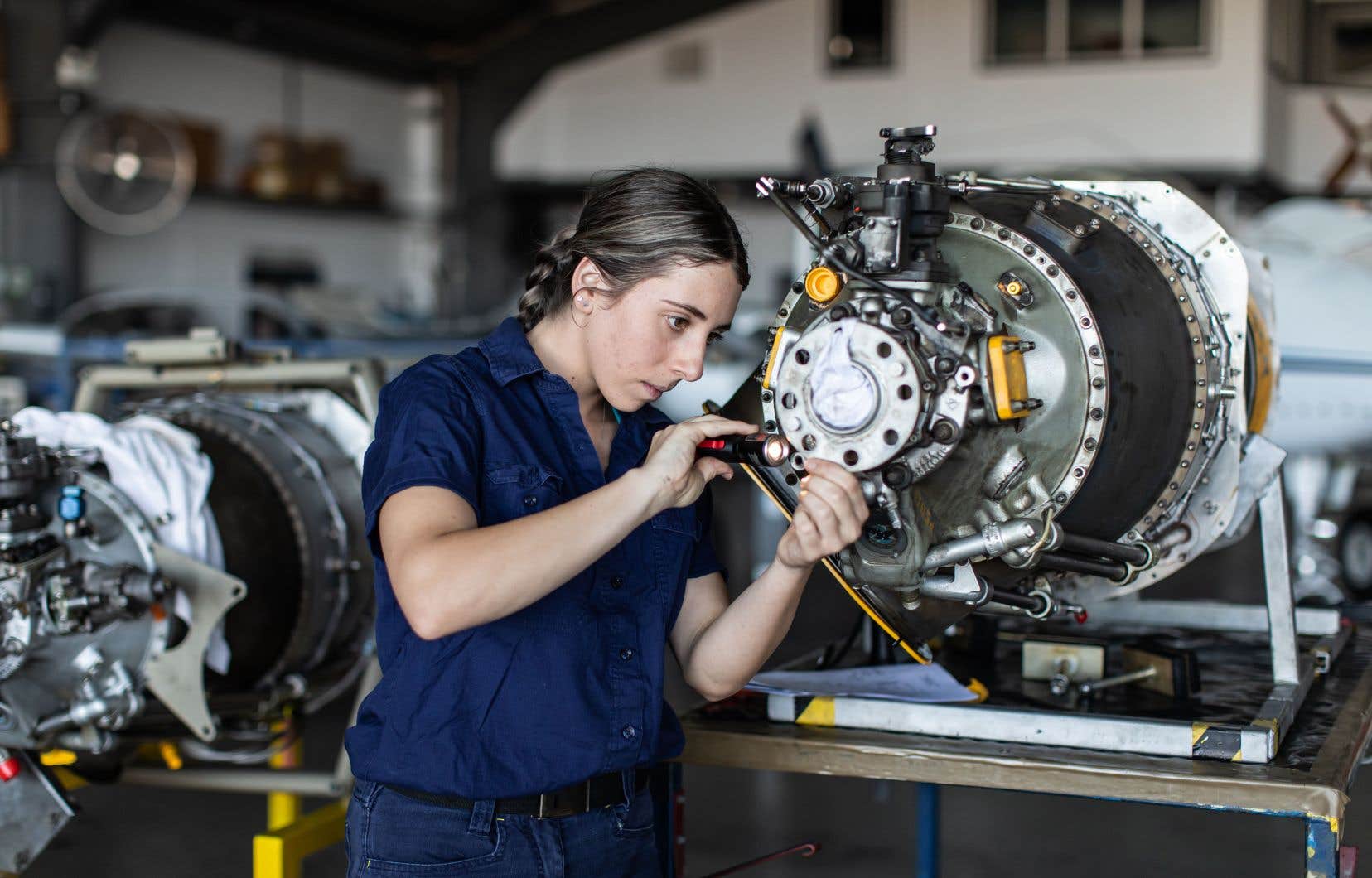In aviation, supply chain challenges are constant. It must be said that this is complex and that there are multiple suppliers. The domino effect can quickly undermine a fragile balance. However, artificial intelligence has a role to play in improving the productivity and stability of the chain.
There are several levels of suppliers in aeronautics, which greatly complicates the operation of supply chains. The challenges are great, recalls the full professor in the Department of Operations and Logistics Management at HEC Montréal, Jacques Roy, who describes a real puzzle.
“We have aircraft manufacturers, such as Bombardier, Boeing or Airbus, who do business with first-tier suppliers, such as Pratt & Whitney for engines. Then, we have the suppliers who will produce landing gear, such as Héroux Devtek. Then come the fuselage suppliers and everything electronic, the raw material manufacturers, and so on,” he explains. To obtain said parts, it can be an obstacle course at all stages.
“An engine manufacturer like Pratt & Whitney must first purchase hydraulic pumps and more sophisticated parts, like compressors, etc. So he himself will call on other levels of suppliers,” says the professor. And who says thousands of suppliers, at different levels, also says domino effect. If there is any delay in the chain, everything can fall apart.
Surveillance systems
To avoid pitfalls, Bombardier has invested in supply chain monitoring systems. Over the past two years, a comprehensive monitoring solution has been in place that detects and reports on global events that could impact the supply chain.
“This helps us respond quickly to problems before they become serious.” Today, we monitor more than 6,000 supplier sites, including our suppliers’ suppliers,” says Vice President of Programs and Supply Chain, Éric Filion. Other measures, such as insourcing and stockpiling, have brought some of the work previously done by suppliers back within the company to ensure parts availability.
Bombardier has also learned from the pandemic, notes Mr. Filion. “We’ve hired more supply chain experts and created a supplier response team that works closely with them to resolve issues directly at their facilities,” he notes.
It is also necessary to rely on few suppliers at certain levels. “Take aircraft engine suppliers, for example. There are relatively few on the planet,” underlines Mr. Roy. Montreal can, however, pride itself on having all the necessary suppliers at hand.
“In the greater Mont-réal region, we often boast of being one of the rare places on the planet where we can assemble an airplane. We have almost all the players needed to assemble an airplane, including flight simulation,” notes Jacques Roy. Éric Fillion indicates, for his part, that last year his company purchased parts from more than 800 suppliers based in Quebec, or half of its suppliers.
The role of AI
The complexity of aerospace supply chains comes from the difficulty in anticipating unforeseen events along the way, which depends on the information available on the inventory level, the production rate of each supplier, and the fact that the companies are independent and therefore have different contact points. “This is where tools like artificial intelligence can help us,” says Mr. Roy.
Bombardier has, for example, integrated forecasts based on AI in order to transform its procurement processes and control its parts inventory, explains Éric Filion. “We have also enhanced our online parts ordering tool, which leverages AI to provide parts recommendations based on customer searches, for a seamless parts purchasing experience,” emphasizes- he.
Jacques Roy points out, however, that very often, it is events beyond anyone’s control that will cause delays. “It could be a natural disaster, like we saw in Japan a few years ago. It could be an earthquake, it could be a pandemic, so all kinds of events can happen that are going to affect our supply chain and therefore delay the assembly of aircraft. There are often delays of more than two years, overruns,” he says.
The professor gives as an example the case of Boeing, which was assembling its new aircraft, the Dreamliner. One part was missing, “a bolt which allowed the components to be assembled together”. Officially launched in April 2004, it was to enter service in 2008, but it accumulated delays to finally make its first flight at the end of 2009 and be certified in the summer of 2011. “So, only one critical part out of stock can delay the assembly of an entire aircraft,” he concludes.
This content was produced by the Special Publications team at Duty, relating to marketing. The writing of the Duty did not take part.
